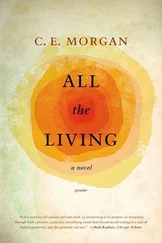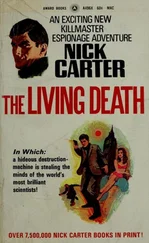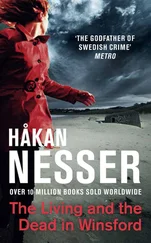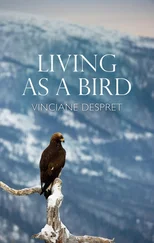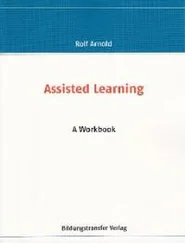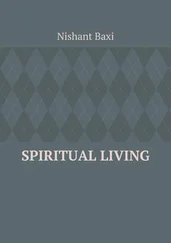Fritz Haarmann—“The Vampire of Hanover”; serial killer of adolescent boys in Germany during the years immediately following World War I
Vyshinsky — Andrey: Prosecutor General of the USSR and considered to be the legal mastermind behind Stalin’s Great Purge. He was also a prosecutor during the Nuremberg trials
Freisler — Roland: acted as judge, jury and executioner in Hitlers People’s Court ( Volksgerichtshof ). During his tenure, there was a dramatic rise in the number of death sentences handed out
falukorv — traditional Swedish sausage
Bullerby — refers to the Six Bullerby Children series by Astrid Lingren, which take place in the small Swedish village of Bullerby (Bullerbyn in Swedish)
Aryosophic — member of an Aryosophic order created by Guido von List at the beginning of the nineteenth century
Norilsk — infamous contaminated industrial town in Russia
Boliden and Rönnskär — mining and smelting operations located near Skellefteå
satrap and hierodule — satrap: general name given to a governor of a province in ancient Persia; hierodule: temple slave in ancient Greece, often associated with prostitution in service to a deity
ninjirkilkin—“the shy one”; apprentice shaman among the Chukchi
Mister Malibog — or else, Mister Horny
Forsyte Saga —British television series based on The Forsyte Saga by John Galsworthy
A Family at War —British television series
pecarirodea — a rodeo conducted with a Pecari tajacu , a “collared peccary”: a type of swine native to Central and South America
paddywacker — police baton
Auntie Anita and Televinken — Anita Lindman, who starred in the Swedish childrens television show Anita och Televinken ; Televinken is a marionette
dascenter — Swedish play on words, lit. dass (toilet) + dase (dick) + center, instead of dagscenter (day center)
nightrajah — hip-long jacket
pyttepanna — (also pyttipanna), traditional Scandinavian dish; usually consists of potatoes, onions and meat, which are diced-up and then pan-fried
Lasse Berghagen — Swedish singer-songwriter
Poglavnik — Ante Pavelic’s title when he ruled over Nazi-controlled Croatia during World War II
Assisted Living has a rare quality: even when approached by relatively experienced readers, and people with strong stomachs in general, evidence shows that the novel has the power to give us at least a glimpse of that incredulity and confusion and delightful shock that a few of our first unsettling (and unsettling mainly because they were our first) reading experiences gave us. To be disturbed by a book is something that belongs to the childhood of our reading. Only as an exception, only very rarely are we blessed with being exposed to something similar later on in life. As we gradually put the years behind us, as we gradually see more, hear more, experience more, and read more, our chances of suffering a literary ambush are also reduced. We become situated, establish an overview, develop tastes, follow our preferences, know more or less what to expect if we go here or there; know pretty much what to expect as we embark upon page five or page seven. I, for my part, have to return to my youthful encounters with Burroughs/Miller/Genet to trump the almost puerile kick I got when I read Teratologen for the first time. “Chuckling at his impudence, weeping at histender sentiment, trembling with sorrow, paralyzed by hate”: he’s already summed it up pretty well himself, I think.
Assisted Living, with its surplus of violence and obscenity, is, of course, not unique in literary history. Forerunners can be found in works by Rabelais, Lautréamont, de Sade, Apollinaire, Céline, Bataille, and Burroughs, to name just a few. Nonetheless, I believe that the novel has something truly original, especially in the way it combines the fairy tale with the surreal and the learned with the poetic, which in turn are mixed with a gruff, biting, and in many ways typical Nordic “rural realism.” The most striking thing about the novel is how complex it is, and how all-encompassing. In a mass of seemingly incompatible vegetation, it blooms explosively, evading most attempts to categorize it. Its a rough-cut and vulgar trash comedy. It’s a classic epic, with roots going back to the Middle Ages and Antiquity. Its a poetic hymn with some of the most beautiful descriptions of nature in Scandinavian postwar prose. Its an exhaustive study in perversion and taboo-breaking. And it’s a radically experimental novel, which in a crossfire of wordplay, allusions, and quotations, converses with (and makes sport of) the entirety of world literature. As such, Assisted Living is a book that contradicts itself at just about every turn. And it’s in this odd polysubstance abuse, in this wellspring of self-contradiction, that Teratologen has developed his distinct voice.
The fairy-tale tone, the grotesque exaggerations, the over-the-top fantasies, which, on the one hand, make it easy to distance oneself — my God, this is too wild! — are, at the same time, that unpredictable force in the text which puts us in direct contact with the harsh living conditions from which it (the text) springs. When Grandpa and the boy creep into Paul Holm’s cow barn and are ambushed by a monster with greedy cunts all over its body, or when stuffed authors and hydrocephalic skulls appear among the trophies in the rightwing Maoist’s [sic] rumpus room, its clear that, realistically speaking, plausibility has been discarded long ago and that the perfidious details are, therefore, not to be taken seriously. At the same time, it’s precisely because it’s all been laid on so thick, precisely because the details so thoroughly exceed the boundaries of probability and plausibility (and because they do so throughout the entire novel) — it’s precisely by virtue of these lunatic premises that the novel creates a version of re; ity that demands credibility. Obviously, the moment that the light from the seven-branch candelabra makes the rumpus room come to life “like a blood-clot,” it’s no longer a real space that we’re entering, but rather an all the more clearly defined space of possibility. In this way, a door is opened into the mental and emotional depths in us all. This is actually conceivable, it’s possible to imagine it, and, therefore, the possibility exists — in the individual, in us, in everyone.
One could say, using Kunderas words on Kafka, that the Upper Kåge Valley—övre Kågedalen —is “an extreme and unrealized possibility” ( The Art of the Novel ). It’s the world according to the boy, and either we accept it or we don’t. Nonetheless, Grandpas relentless boasting and the first-person narrator’s tendency to distort anything and everything can be read as the last, desperate (read: literary) attempt of two degenerate and outcast souls to overcome their unbearable loneliness. The “dear friend’s” introductory comments regarding the appendix (“Memories of Grandpa”) supports this reading. And yes, perhaps it really is just the two of themmaking it all up …? Perhaps the enchanted, devilish landscape is, in reality, nothing more than a gloomy, northern, deindustrialized, remote sort of place where nothing much happens …? Perhaps the beastly murders and gory violence really are simply the quixotic daydreams of an old man and a boy the world forgot …? It’s at this point that the endless transgressions and boundary-crossings of Teratologens tall tale takes on a tragic dimension, despite whatever wild and unbelievable hyperbolic heights the novel may reach. This idea invites a “realistic” interpretation of the novel, in which every character seems to have an aura of insane wishful thinking about them, an aura that, in the boys story, materializes in the form of real characteristics, real features, real artifacts in an obscene white-trash theater of dreams.
Читать дальше

